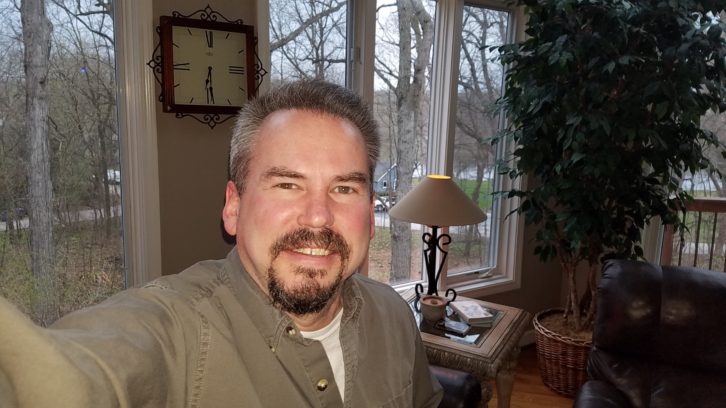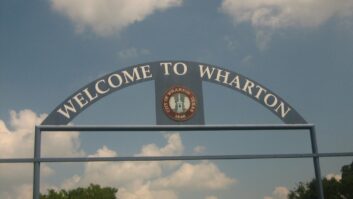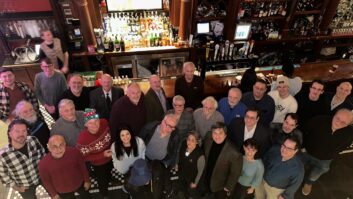
This story has been updated with new information in the last question.
This is one in a series of interviews about legal, unlicensed low-power broadcasting and how these systems are being used during the coronavirus crisis in the United States. Eric Hoppe is owner of Progressive Concepts. Its product line includes FM and low-power systems.
Radio World: Are you hearing interest from unfamiliar quarters in how to use low-power transmitter systems for specialized applications right now?
Eric Hoppe: Yes. We are getting a huge number of calls from churches around the country asking if we can help them to broadcast their sermon into the parking lot of their church.
RW: Can you share a specific example?
Hoppe: Just last week a customer from Texas called and explained that he was trying to find a way to set up a mini drive-in theatre in the parking lot of his temporarily closed restaurant using a large screen TV and a DVD player. But he needed help figuring out how to get the audio signal out into all of the cars that would be parked in his lot. We set him up with one of our FCC certified Part 15 FM transmitters to solve the problem. [Part 15 is the section of federal regulations that pertains to unlicensed transmissions.]
RW: Which product of yours is used in these kinds of applications?
Hoppe: That would be our model ACC100, which is FCC certified for license-free Part 15 use in the U.S. We manufacture them right here in Streamwood, Illinois.
RW: What should potential buyers of such systems know about legality and about FCC certification?
Hoppe: Whatever you do, avoid at all costs buying something from websites like Amazon or eBay. That is a recipe for disaster. Most, if not all, of the FM transmitters you will find on sites like those are made in China and will not be FCC certified.
Using an FM transmitter that is not FCC certified can get the user into a lot of trouble with the FCC. Fines start at $10,000 and go up to $75,000 for each offense of this type. Look for the FCC ID number on the transmitter you intend you use.
Avoid at all costs buying something from websites like Amazon or eBay. That is a recipe for disaster.
For example, our model ACC100 bears the FCC ID number MBMACC100. You can look that number up on the FCC’s database to verify that the product is certified and registered with the FCC before using such a device. The first three letters of the ID are the manufacturer’s “Grantee Code” (in our case this is “MBM”) and the remaining letters and numbers are the manufacturer’s “Product Code.”
RW: A common question we hear is “How far will it cover?” What can users expect?
Hoppe: We get that question all the time. Users can expect to get anywhere from 50 to 200 feet in radius when using a Part 15 FM transmitter. Results will vary depending on the location that the transmitter is deployed in. If all the stars are in alignment, you can cover an area the size of a football field (just the playing surface, not including the stadium) or about one acre.
Many customers think that they will be able to set up the transmitter inside the church then connect it to their mixing console and broadcast through the walls of the church and out into the parking lot. This just isn’t possible with such a low-power device.
To get the best results with a Part 15 transmitter we recommend that the customer locate the transmitter as close to the center of the parking as is possible. This requires using a long extension cord for the power and a relatively long audio cable. Then they need to use their car radio to scan for an open spot on the FM “dial” and then simply set their transmitter to that frequency. Once the customer understands this concept, they have reported back to us with very good results!
[Related: “Low-Power Radio in the Parking Lot: What You Need to Know”]
RW: What else should we know?
Hoppe: Some customers have asked me if I can set them up with an FM transmitter that will cover an area of several miles. Unfortunately, while we do sell LPFM transmitters that can provide that kind of range, there is no legal way for them to do that. They would need a license for that kind of RF power and range. Fortunately there is a legal way that they can cover the area of an average size parking lot. They can use one of our FCC certified Part 15 FM transmitters. Part 15 certified FM transmitters can be used legally by anybody, anywhere in the U.S. without the need for a license.
Update: We asked the following in a subsequent email exchange:
RW: Eric, after the interview above appeared, you mentioned an additional concern about products being sold online. Can you tell us what buyers of such systems should be looking for, to be sure they’re legal in the U.S.?
Hoppe: Yes, I am getting a lot of calls from people saying that they are buying Chinese-made transmitters on Amazon or eBay that have an FCC part 15 ID number on them. However, when they show me pictures of the rig, it clearly has a detachable antenna using a standard BNC type RF connector (a very common connector). FCC Part 15 rules strictly prohibit a detachable antenna on all Part 15 transmitters:
- 15.203 Antenna requirement. An intentional radiator shall be designed to ensure that no antenna other than that furnished by the responsible party shall be used with the device. The use of a permanently attached antenna or of an antenna that uses a unique coupling to the intentional radiator shall be considered sufficient to comply with the provisions of this section. The manufacturer may design the unit so that a broken antenna can be replaced by the user, but the use of a standard antenna jack or electrical connector is prohibited.
In other words: the antenna must be permanently affixed to the transmitter or use a unique type of RF connector. So it is clear to me that some Chinese manufacturers have pulled a fast one with the FCC and received an ID number for a transmitter that uses a standard BNC connector which can not be legal under Part 15 regulations.
When shopping for a Part 15 transmitter always look for both the FCC ID number (and check it against the FCC database to be sure it is legit) AND make sure that the antenna is permanently attached to the device. Any unit with a detachable antenna with a standard or common type connector such as a BNC, UHF, N-Type, etc. connector is not legal for use under Part 15 regulations and can make you liable for some hefty fines from the FCC.








